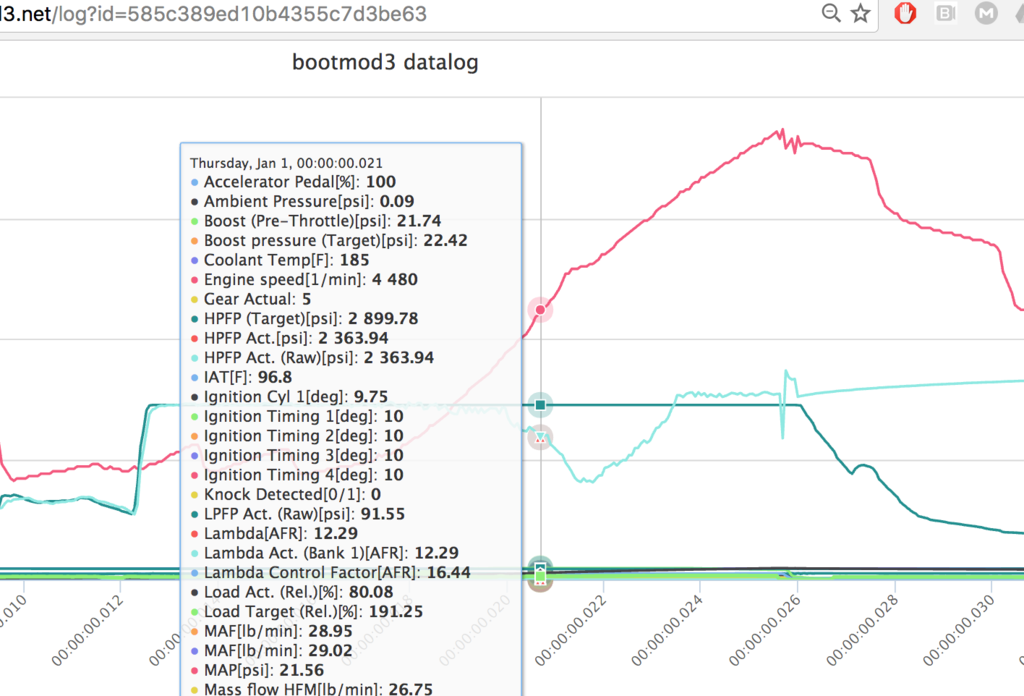Quote:
Originally Posted by proTUNING Freaks



The DME does use all those systems in various protection scenarios. However, since you mentioned throttle might have a relationship to fuel pressure, take a closer look here:

Throttle starts to close at 2800rpm while the HPFP is still on target for another 1000rpm. HPFP only begins to drop at 3900rpm which if you compare to the dyno graph is on its way and getting close to peak torque. HPFP pressure bottoms out at 5k which given the dyno graph is the point where torque is highest for a given RPM and there's most fuel demand from the HPFP. The DME has throttle wide open already though 800rpm before that, at 4400, where was the DME to protect it with throttle if throttle was part of that protection strategy? 
Throttle isn't part of the fuel pressure protection strategy as throttle would've been closed throughout the HPFP drop, it would not open as it was dropping if that were the case. Throttle is a boost control component.
HPFP starts to climb back up past about 5300rpm as torque starts to drop off eventually managing to keep up with fuel demand as we're unable to keep torque flat to redline at this torque level on these turbos. At the same time boost is dropping off towards redline so some of that torque could potentially be lifted towards redline as well but I suspect we'd just see the HPFP not recover longer than here, or go further south.
Question I'll leave you with, why are people adding meth when pushing power on this motor, especially in midrange, if we might have considerably more room to go in the OEM fuel system? How many dynos on straight race gas without supplementing with meth have you seen where someone pushed far higher than say 700wtq in midrange with stock or upgraded turbos? If you know of anyone I'd love to see some datalogs with dyno graphs. There's considerable midrange power/torque left on the table even on stock turbos with appropriate octane.
We're on the same team here, just trying to get the most power out of these beasts so the more factual data is posted the better the discussion. Cheers  |
It depends on what you are hitting. It could be a lambda limitation, it could be the torque to fuel table is not calibrated in the region you are reaching, it could be hitting an airflow limitation on the amount of pedal, it could be something as simple as the table axis controlling air/fuel/boost/spark/etc only go to a specified amount in Nm. It could be anything hence why I suggested there should be more investigation into the reason.
In my experience, fuel limitations occur at some RPM and flatline, not fall and then recover if it was a hardware limitation. You get to the point of max pressure and the pump would supply what it could. That dropoff of fuel pressure and throttle looks controlled by the ECU. Hence why I call the HPFP limitation not plausible at this time.
I'll answer your question. The aftermarket tuners usually are only making changes to part of the ECU to create more power. They are not usually adjusting all the tables for complete functionality as the time and reverse engineering of all the tables are very expensive. Meth is just a band-aid until someone investigates more and determines why the fuel reduction/dropout is happening.